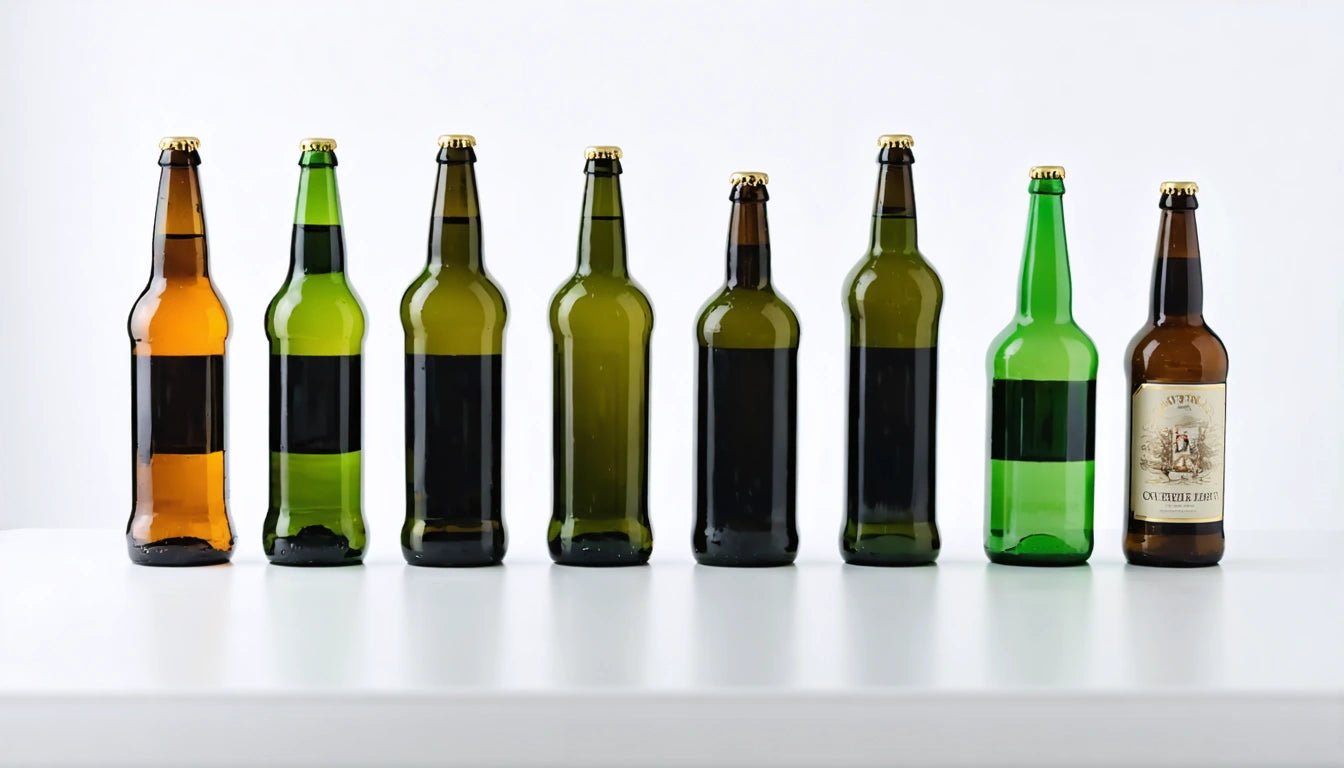Table of Contents
Understanding Bottle Sizes: Beer, Wine, Liquor, and More
Bottle sizes vary widely across beverage categories, with each industry adopting its own standard measurements and terminology. Whether you're curious about how big a beer bottle is, wondering about wine bottle dimensions, or need information on liquor bottle heights, this comprehensive guide covers the essential measurements and specifications for common bottle types.
Beer Bottle Dimensions: Standard Sizes and Variations
The normal size of a beer bottle in the United States is typically 12 ounces (355 ml), standing approximately 9 inches tall with a diameter of about 2.5 inches. However, dimensions can vary between brands and bottle styles.
Standard Beer Bottle Sizes
When asking how big is a bottle of beer, the answer depends on the specific product and region:
- Standard bottle: 12 oz (355 ml)
- Stubby bottle: 12 oz but shorter and wider
- Bomber/large format: 22 oz (650 ml)
- European standard: 330 ml (11.2 oz)
For specific brands like Budweiser, their standard bottles are 12 oz with a height of approximately 8.5 inches. According to this guide on beer bottle sizes, longneck bottles can add another half-inch to the overall height.
Wine Bottle Sizes: From Split to Nebuchadnezzar
Wine bottles follow different sizing conventions than beer, with the standard bottle containing 750 ml (25.4 oz). When asking how big is a bottle of wine, we need to consider both volume and physical dimensions.
Standard Wine Bottle Dimensions
A standard 750 ml wine bottle typically measures:
- Height: 11.5-13 inches (depending on style)
- Diameter: 3-3.5 inches at the base
- Weight (empty): 400-700 grams
Wine bottles come in various shapes, with Bordeaux bottles being straight-shouldered while Burgundy bottles feature sloping shoulders. These design differences can affect the overall dimensions despite containing the same volume.
Interestingly, while researching various container sizes, we found that larger format smoking accessories follow similar principles of standardization, with precise measurements like 140mm correlating to specific capacity (1.8 grams).
Liquor Bottle Measurements: Heights and Volumes
Liquor bottles vary significantly in height based on their volume and design. The question of how tall is a liquor bottle depends on the specific size classification.
Standard Liquor Bottle Heights
- Mini (50 ml): 3-4 inches
- Half Pint (200 ml): 6-7 inches
- Pint (375 ml): 8-9 inches
- Fifth (750 ml): 11-12 inches
- Liter (1000 ml): 12-13 inches
- Handle (1.75 L): 13-14 inches
As detailed in this resource on liquor measurements, bottle sizes are often standardized for regulatory and shipping purposes, though premium brands may use distinctive bottle shapes that alter these dimensions.
Water Bottle Dimensions: Plastic and Glass Options
Water bottles, particularly plastic varieties, have their own set of standard dimensions. When considering how tall is a plastic water bottle, the answer varies by capacity:
- 8 oz bottle: 5-6 inches
- 16.9 oz (500 ml): 8 inches
- 1 liter: 10-11 inches
- 2 liter: 11-12 inches
For 2-liter soda bottles, the standard height is approximately 12 inches with a diameter of about 4.5 inches. These larger format bottles typically use a standardized design across brands for efficiency in shipping and storage.
Bottle Size Comparisons Across Categories
Comparing bottles across different beverage categories reveals interesting patterns in design and capacity standardization:
| Bottle Type | Standard Volume | Typical Height | Diameter |
|---|---|---|---|
| Beer Bottle | 12 oz (355 ml) | 9 inches | 2.5 inches |
| Wine Bottle | 750 ml (25.4 oz) | 12 inches | 3 inches |
| Liquor Bottle | 750 ml (25.4 oz) | 11-12 inches | 3-3.5 inches |
| Water Bottle | 500 ml (16.9 oz) | 8 inches | 2.5 inches |
As shown in this bottle size guide, despite similar volumes, bottles can have significantly different dimensions based on their intended use and industry traditions.
Practical Applications of Bottle Size Knowledge
Understanding bottle dimensions has practical applications beyond mere curiosity. This knowledge is valuable for:
- Shipping and packaging calculations
- Storage planning (refrigerator, cellar, cabinet space)
- Retail display design
- Recycling program management
- Custom packaging development
For businesses in the beverage industry, standardized bottle dimensions allow for efficient logistics and consistency in consumer expectations. As this comprehensive guide notes, bottle standardization has evolved over centuries to balance practical considerations with brand differentiation needs.
Whether you're designing a storage solution, planning a shipping strategy, or simply satisfying your curiosity about how big a Budweiser bottle is compared to a standard wine bottle, these dimensions provide a useful reference point for understanding the physical properties of common beverage containers.



















